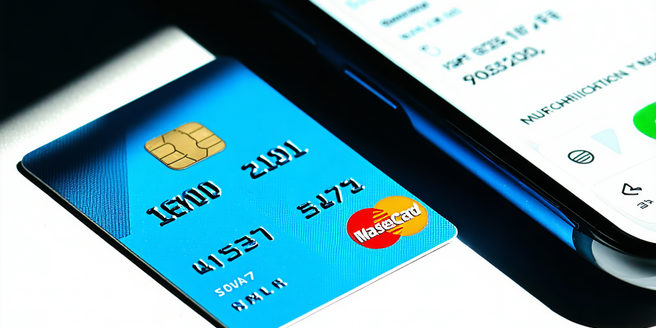
Understanding EMV Chip Technology
EMV chip technology is a significant advancement in credit card security, designed to protect against fraudulent transactions. Unlike traditional magnetic stripe cards, EMV cards include an embedded microchip that generates a unique transaction code every time the card is used, making it incredibly difficult for fraudsters to duplicate. This dynamic authentication data ensures that even if a transaction code is stolen, it cannot be reused. EMV technology also supports both contact and contactless payments, enhancing the convenience and security of transactions. Retailers and financial institutions have adopted this technology widely as it reduces the risk of counterfeit card fraud. As more consumers and businesses embrace EMV chip-enabled cards, the security landscape continues to evolve, offering improved safety over older card processing methods. Understanding how EMV technology works is crucial for both consumers and businesses to stay protected.
The Importance of Two-Factor Authentication
Two-factor authentication (2FA) is an essential security feature that adds an extra layer of protection to digital transactions. By requiring not only a password and username but also something that the user possesses—such as a smartphone or a hardware token—2FA significantly reduces the risk of unauthorized access. It ensures that even if a cybercriminal discovers your password, they cannot complete the login process without the second factor. This method is widely adopted across various platforms, from online banking to social media, offering an efficient way to enhance security. Incorporating 2FA helps mitigate the risks associated with password theft, phishing, and other common cyber threats. As digital environments continue to evolve with increased sophistication, the role of 2FA becomes even more critical in safeguarding personal and financial data. Its implementation provides users with peace of mind.
How Tokenization Protects Your Data
Tokenization is a powerful security measure that helps in protecting sensitive data during transactions. By replacing sensitive information, such as credit card numbers, with unique identification symbols or ‘tokens’, it ensures that this data never actually passes through or is stored on merchant systems. These tokens are useless outside the specific transaction, thereby reducing the chances of data theft. When properly implemented, tokenization minimizes the risk of exposing actual card details to hackers during data breaches. Financial institutions adopt this technology to maintain a secure transaction flow, which, in turn, fosters trust among consumers. Tokenization is becoming increasingly popular as businesses seek compliance with stringent data protection regulations. By securing data from start to finish, tokenization allows companies to focus on customer experience without compromising on security. This transformation in data handling safeguards privacy and enhances trust.
Biometric Security for Credit Cards
Biometric security offers a sophisticated way to protect credit card transactions by using unique biological characteristics such as fingerprints, face recognition, or iris scans. This technology enhances security by ensuring that only the authorized individual can access account information or complete a purchase. Biometrics negates the need for passwords or PINs that can be easily forgotten or stolen, providing a more secure authentication method. The integration of biometric security into credit card systems is gaining traction, promising a future where traditional verification methods are largely obsolete. Not only does this make the credit card usage experience more seamless, but it also significantly reduces the risk of fraud. As this technology becomes more widespread, cardholders will benefit from enhanced protection against unauthorized transactions. Embracing biometric security reflects a commitment to advancing secure financial transactions that are harder to compromise.
Encryption: Keeping Your Transactions Safe
Encryption plays a key role in securing credit card transactions by converting data into a code that only authorized parties can decipher. This practice ensures that sensitive cardholder information, transmitted during the payment process, remains confidential and protected from unauthorized access. Encrypted data is unreadable to cybercriminals, safeguarding against data breaches and ensuring privacy. Banks and payment providers employ encryption methods such as SSL/TLS to secure online transactions, helping to build user confidence in digital payment systems. While the encryption technology constantly evolves to counteract advanced cyber threats, it remains a fundamental element of payment security. By implementing robust encryption practices, businesses can protect consumer data while upholding regulatory compliance. As encryption standards improve and awareness grows, cardholders can enjoy safer transactions, fostering trust in digital and mobile payment platforms.
Fraud Detection and Real-Time Alerts
Advanced fraud detection systems play a crucial role in safeguarding credit card transactions by monitoring for unusual activities and triggering real-time alerts. These systems employ cutting-edge technologies, including artificial intelligence and machine learning, to analyze transaction patterns and identify suspicious behavior quickly. Real-time alerts enable banks and consumers to respond immediately to potential threats, preventing unauthorized transactions before they can cause harm. This proactive approach to fraud prevention not only helps in mitigating financial losses but also fosters consumer confidence. By continually adapting to new and evolving scams, fraud detection tools enhance the security infrastructure of financial institutions. As consumers demand greater protection, banks are increasingly offering customizable alert options, providing users with tailored security and peace of mind. The integration of this technology underscores the importance of staying vigilant in safeguarding financial data against fraudulent activities.
